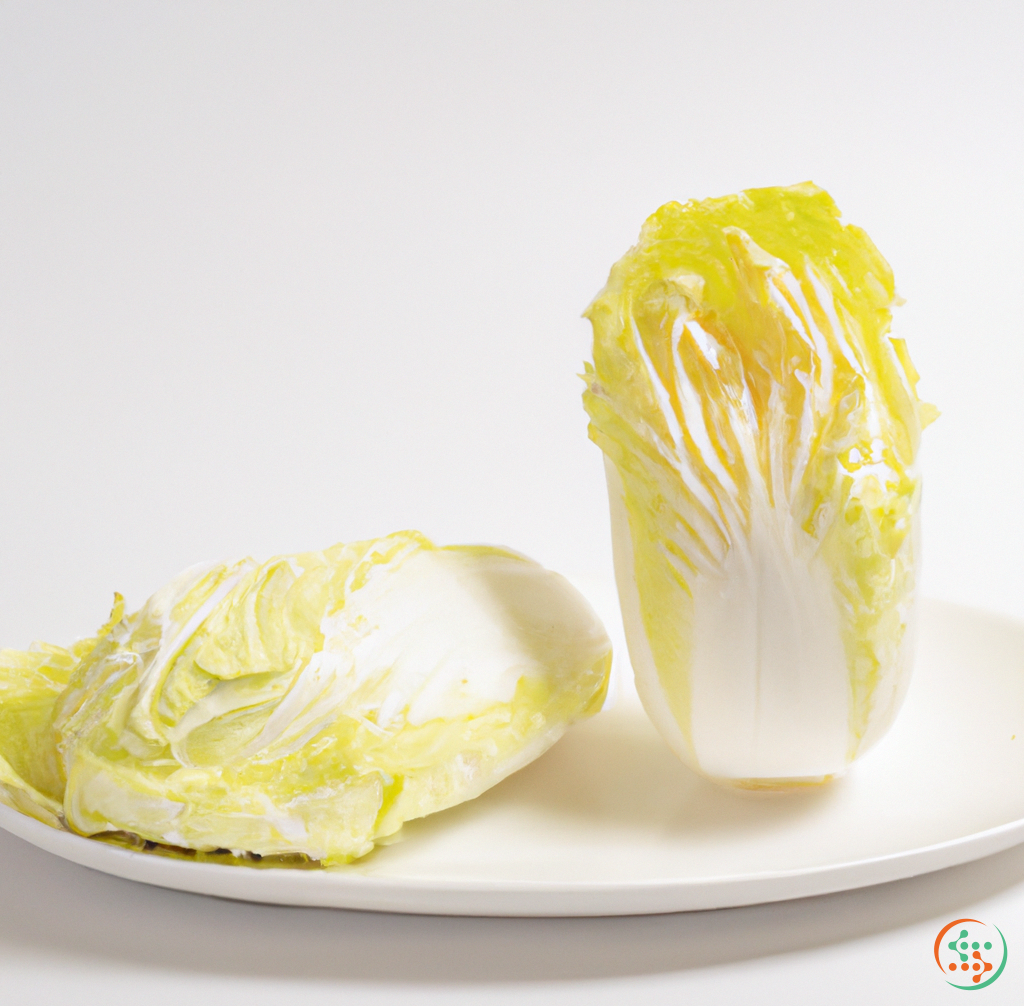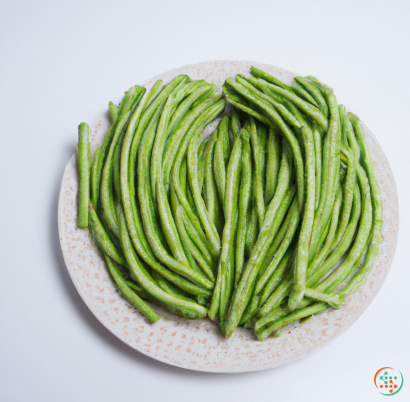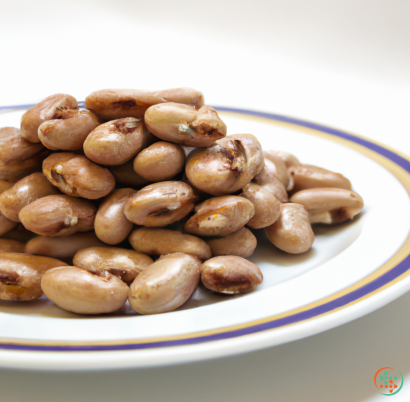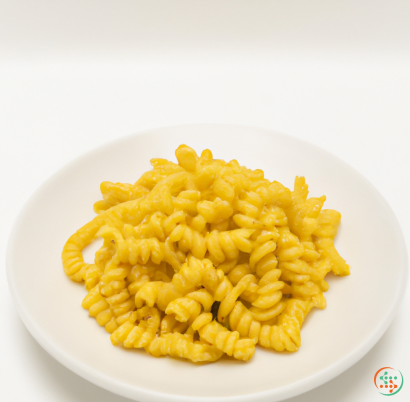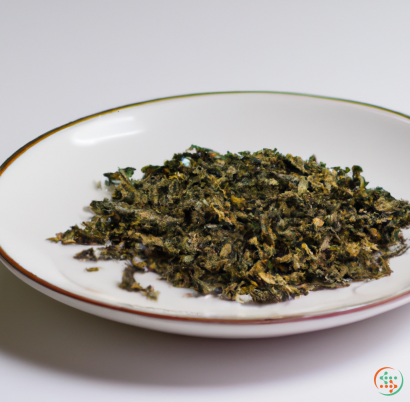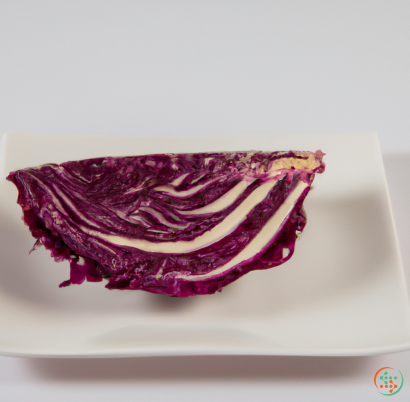Chinese Cabbage
and how to cook it
What is Chinese Cabbage?
Chinese Cabbage, also known as Napa Cabbage, is a leafy green vegetable that belongs to the Brassica rapa family. It is related to the head cabbage and bok choy, with a milder flavor and tender leaves, which makes it a popular ingredient in many dishes. Chinese Cabbage has long been popular in China, but it is also very popular in many other parts of the world, including the United States and Europe.
Chinese Cabbage can be found in Asian grocery stores, green markets, and some supermarkets. It is most often sold whole, but it can also be bought pre-shredded and prepared for convenience. The head of the cabbage is long and white, with thick outer leaves and thin inner leaves. It has a slightly sweet and tangy flavor, which balances the crunchiness of the cabbage.
Chinese Cabbage is a very versatile vegetable, as it can be used to make salads, soups, stir-fries, and much more. It pairs well with other vegetables like mushrooms, garlic, or ginger, and can also be stir-fried with meat or seafood. It is also very low in calories, making it a great choice for health-conscious eaters.
How to Cook Chinese Cabbage
There are several ways to cook Chinese Cabbage, and each one will yield a different result. Here are some of the most popular methods:
• Steaming: Steaming Chinese Cabbage is one of the quickest and easiest ways to prepare it. To steam, cut the cabbage into wedges or thin strips and place in a steamer basket over boiling water for 5-7 minutes. Alternatively, you can add it to a soup or stew at the end of cooking. Steaming will retain the crispness and sweetness of the cabbage, while making it easier to digest.
• Stir-frying: Stir-frying Chinese Cabbage is a popular way to enjoy its crunchy texture. To stir-fry, heat a wok or large skillet over high heat and add oil. Add the cabbage and any other vegetables or proteins you are using, and stir-fry for 4-5 minutes or until desired tenderness.
• Salads: Chinese Cabbage can also be used to make salads. To make a salad, cut the cabbage into thin strips and combine with other ingredients such as shredded carrots, diced bell pepper, sliced cucumbers, and/or celery. For a flavorful dressing, whisk together rice wine vinegar, soy sauce, sesame oil, and grated fresh ginger. Add a sprinkle of sesame seeds for extra flavor and texture.
• Soups: Chinese Cabbage is also a great addition to soup. To make a soup, add the cabbage at the end of the cooking time, along with any other vegetables or proteins you are using. Simmer for an additional 5 minutes until the cabbage is tender.
No matter how you choose to cook Chinese Cabbage, remember that it should be eaten soon after preparation to ensure it retains its crunch and flavor.
Conclusion
Chinese Cabbage is a versatile vegetable that can be used in a wide variety of dishes. It has a mild flavor and a unique crunch. It is low in calories and high in vitamins, minerals, and fiber. Whether you steam, stir-fry, or make it into a salad, Chinese Cabbage is sure to be a hit in your kitchen.
The Production and Journey of a Chinese Cabbage from Farm to Dinner Plate
Chinese cabbage, or Brassica rapa, is a vegetable often featured in Asian cuisine, including lettuce wraps, stir-fries, and noodle dishes. Many of us take this tasty vegetable for granted and don’t give much thought to the production and journey it must take to reach our dinner plate.
This blog post will examine the many steps that go into growing and delivering Chinese cabbage to the dinner table, from seed to vegetable. By breaking the process down into components, we can gain an understanding of the complex journey these cabbages make.
Growing Chinese Cabbage
Chinese cabbage is a cool-season crop, so it should be planted in the early spring before warmer weather is expected. The best soil for Chinese cabbage is rich and well-drained, with a pH level between 5.5 and 6.8. It is important to pay attention to soil conditions when growing Chinese cabbage as it is prone to diseases such as root rot, which is caused by poor soil drainage. If the soil has a lot of nitrogen, it is important to add a light mulch to the planting bed to reduce nitrogen levels.
In order to germinate, the seeds must maintain a temperature of between 65 and 70 degrees Fahrenheit. To encourage faster germination, the seeds can be soaked in warm water overnight before planting. Planting is done by scattering the seeds and then covering them with a thin layer of soil. It is important to keep the soil moist during the germination process.
Once the seedlings are emerging, it is important to thin them out to ensure they have enough space to grow. Chinese cabbage plants should be spaced out at a distance of at least 12 inches.
From this point on, Chinese cabbage care is relatively simple. Keep the soil moist, make sure the plants are receiving adequate sunlight, and fertilize once per month. Weeds should be cleared away from the plant, as they can compete with the Chinese cabbage for resources. Chinese cabbage is usually ready to harvest in about 70 days.
Harvesting Chinese Cabbage
Once Chinese cabbage has reached maturity, it should look compact and firm. The outermost leaves will be tougher than inner leaves, so they can be removed before harvesting.
Once the outer leaves have been removed, the cabbage is gently pulled up from the soil by grasping its base. In order to prevent damage to the roots, the Chinese cabbage should be twisted and pulled up carefully. Care should also be taken not to damage the leaves.
Once the Chinese cabbage has been harvested, it is inspected for blemishes. These can include signs of insect or fungal damage, sunburned or yellowing leaves, root damage, or other deformities. Damaged cabbages must be removed from the bunch, and any remaining cabbages checked for bruising.
Once the cabbages have been inspected, they can be transported to a storage facility or directly to a customer.
Chinese Cabbage Storage
Chinese cabbage is best stored at a temperature between 32 and 53 degrees Fahrenheit. This temperature range ensures that the cabbage retains its crispness. The humidity should also remain high, as Chinese cabbage is a root crop and is sensitive to desiccation.
Once the harvest is complete, the Chinese cabbages should be kept in a controlled atmosphere environment. This can be a cooler with individual shelves to separate different batches of cabbages, or a chilling unit that allows for whole boxes to be stacked. The ambient temperature should remain constant, and the humidity and oxygen levels should be monitored.
Caretakers should inspect the cabbages regularly and remove any that have begun to rot. This is critical; if cabbages are left to rot, they can start to produce ethylene, which can cause other nearby cabbages to ripen too quickly.
Packaging China Cabbage
Once the Chinese cabbages are harvested and stored, the next step is to pack them for shipping. The leaves must be wrapped carefully so that the cabbages arrive undamaged and without bruising. The wrapping should protect the leaves from knocks and bangs and keep the cabbages from sticking together.
It is also possible to use ventilated plastic trays to prevent damage during shipping. These trays can be filled with water to maintain a high humidity level and keep the cabbages fresh during transit.
There are many different packaging options available for shipping Chinese cabbages. It is important to choose an option that offers good ventilation and sufficient protection from the elements. Shipping boxes should be lined with insulation to protect the cabbages from temperature fluctuations.
Shipping Chinese Cabbages
Once the Chinese cabbages have been packed, they can be loaded into trucks and shipped to various customers. Chinese cabbage transportation typically occurs in refrigerated trucks to ensure that the cabbages remain fresh during transit.
The main considerations when transporting Chinese cabbage are temperature and humidity. The cabbages must remain below 64 degrees Fahrenheit, and the humidity should stay at a consistent level. Whenever possible, the cabbages should be the only cargo in the truck to minimize temperature fluctuations.
In addition to temperature and humidity, it is important to monitor the amount of vibration the cabbages receive during transport. High levels of vibration can damage the cabbages’ leaves and roots.
Purchasing Chinese Cabbage
When purchasing Chinese cabbage, shoppers should inspect the cabbages for signs of spoilage. Cabbages should be firm, with crisp and dry leaves that don’t show signs of wilting. It is also important to check that the cabbages have been stored in the proper conditions, as cabbages that have been stored in hot or humid conditions can quickly spoil.
Before purchasing Chinese cabbages, shoppers should also check the country of origin and the harvest date. This will ensure that the cabbages are as fresh as possible and that they come from a reputable source.
Preparing Chinese Cabbage
Once shoppers have selected the right Chinese cabbage, they can take it home and start preparing it for meals. Depending on the type of dish being cooked, cabbages may need to be washed, steamed, stir-fried, pickled, or braised.
When cutting or shredding Chinese cabbage, it is important to use perfectly sharp knives. A dull knife may slip and bruise the cabbage and reduce its shelf life. It’s also important to store the cabbage in cool, dry conditions in the refrigerator to prevent it from spoiling quickly.
Bringing Chinese Cabbage to the Dinner Table
By following the steps outlined in this blog, customers can bring freshly harvested Chinese cabbage to their dinner tables. Whether it is part of a stir-fry, a lettuce wrap, or a healthy side dish, Chinese cabbage is a delicious and nutritious vegetable that is a great addition to any meal.
Although there is a lot of work involved in bringing Chinese cabbage from the farm to the dinner plate, the journey is well worth it. After all, fresh food always tastes best!
| Vitamin A | 0.223 mg | |
| Beta-Carotene | 0.002681 grams | |
| Alpha-Carotene | 0.001 mg | |
| Vitamin E | 0.09 mg | |
| Vitamin K | 0.0455 mg | |
| Vitamin C | 0.045 grams | |
| Vitamin B1 | 0.04 mg | |
| Vitamin B2 | 0.07 mg | |
| Vitamin B3 | 0.5 mg | |
| Vitamin B4 | 0.0064 grams | |
| Vitamin B5 | 0.09 mg | |
| Vitamin B6 | 0.19 mg | |
| Vitamin B9 | 0.066 mg |
| Calcium | 0.105 grams |
Daily Value 1.3 g
|
| Iron | 0.8 mg |
Daily Value 0.018 g
|
| Magnesium | 0.019 grams |
Daily Value 0.4 g
|
| Phosphorus | 0.037 grams |
Daily Value 1.25 g
|
| Potassium | 0.252 grams |
Daily Value 4.7 g
|
| Sodium | 0.065 grams |
Daily Value 2.3 g
|
| Zinc | 0.19 mg |
Daily Value 0.011 g
|
| Copper | 0.02 mg |
Daily Value 0.9 mg
|
| Manganese | 0.16 mg |
Daily Value 0.0023 g
|
| Selenium | 0.5 ug |
Daily Value 0.055 mg
|
| Tryptophan | 0.015 grams | |
| Threonine | 0.049 grams | |
| Isoleucine | 0.085 grams | |
| Leucine | 0.088 grams | |
| Lysine | 0.089 grams | |
| Methionine | 0.009 grams | |
| Cystine | 0.017 grams | |
| Phenylalanine | 0.044 grams | |
| Tyrosine | 0.029 grams | |
| Valine | 0.066 grams | |
| Arginine | 0.084 grams | |
| Histidine | 0.026 grams | |
| Alanine | 0.086 grams | |
| Aspartic Acid | 0.108 grams | |
| Glutamic Acid | 0.36 grams | |
| Glycine | 0.043 grams | |
| Proline | 0.031 grams | |
| Serine | 0.048 grams |
| Total Sugars | 1.2 grams |
per 100g
|
| Palmitic acid (16:0) | 0.02 grams |
|
| Total Saturated fatty acids: | 0.02 g | |
| Oleic acid (18:1) | 0.02 grams |
|
| Total Monounsaturated fatty acids: | 0.02 g | |
| Linolenic acid (18:3) | 0.06 grams |
|
| Linoleic acid (18:2) | 0.04 grams |
|
| Total Polyunsaturated fatty acids: | 0.1 g | |
